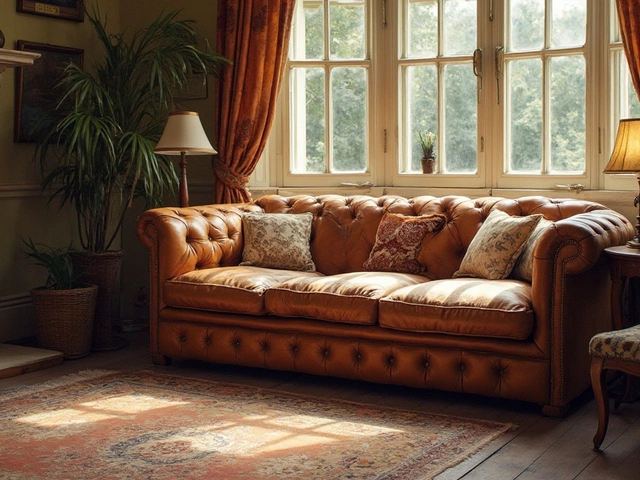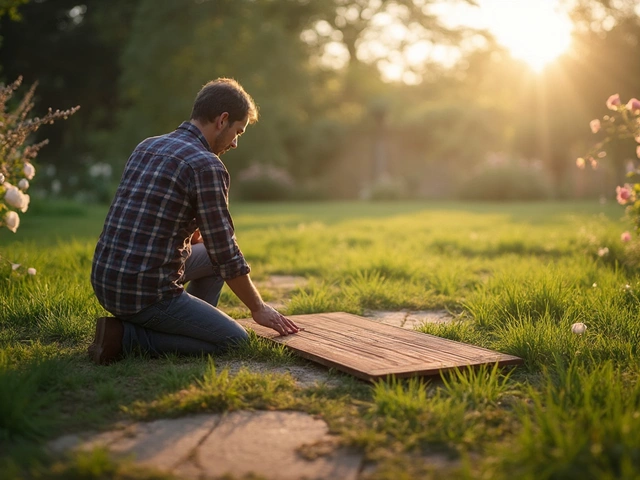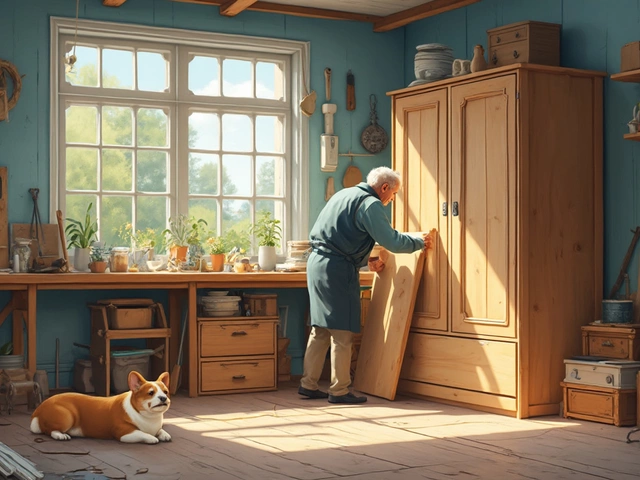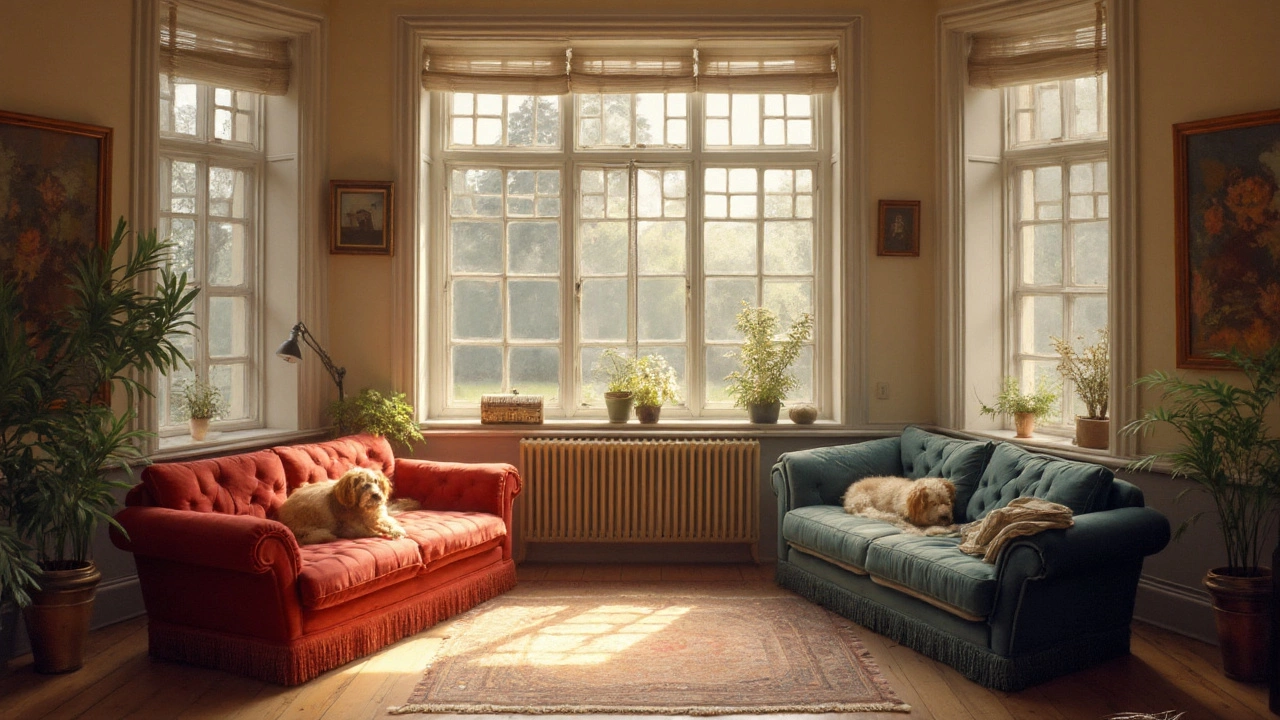 3
Aug,2025
3
Aug,2025
Spending thousands on a couch—good investment or just a flex? Melbourne’s streets are littered with saggy sofas, from budget disasters to former luxuries. People always say, “You get what you pay for,” but when it comes to couches, does a big price tag really buy more years of comfort? Or are you just funding some clever marketing and a fancy designer’s vacation? Let’s pull the cushions back and see what actually makes a couch outlast the rest.
What Makes a Couch Durable?
If you want a couch built to survive footy nights, kids’ wrestling matches, and the occasional red wine mishap, you’ve got to understand the nuts and bolts—literally. The skeleton of any durable sofa starts with the frame. Real hardwood frames (think oak, ash, or maple) offer muscle that softwoods and engineered plywood can’t match. Some higher-end couches use kiln-dried hardwood, a process that removes moisture so the wood doesn’t twist or warp over time. IKEA sofas mostly use particle board or softer woods; they’re light on the wallet but honestly, they fall apart if you move house a couple of times. If you lift a premium sofa and nearly throw out your back, that’s usually a good sign—heavier frames often mean hardwood and better craftsmanship.
The next piece is joinery. Look under the couch—if you spot screws, dowels, and wooden corner blocks, that’s gold. Yep, these details add to the price, but they stop wobbling and squeaks. Cheaper pieces usually staple everything together. Staples are fine—if you’re planning on replacing your couch every two years when it starts groaning every time you plop down.
Let’s not forget about springs. Better sofas use sinuous or hand-tied springs for support, which gives the seat that perfect bounce without bottoming out. Lower-priced models might use just webbing or—worse—no support at all. Webbing stretches and sags. Hand-tied springs, those are the Rolls Royce; they cost more, but you’ll rarely see a droopy seat in sight.
Even the stuff you don’t see makes a difference. Cheap foam flattens and forms body-shaped craters. High-resilience foam or a mix of down and feathers holds shape longer. They do cost extra, but it’s the difference between a couch that still supports your Netflix marathons years later and one that’s just a lumpy mess by year two.
The upholstery does some heavy lifting too. Leather is the easiest example—top-grain leather can last a decade or more and only gets better with age if you wipe up spills and use a conditioner now and then. Some of the priciest sofas use aniline leather, which is incredibly soft but stains easily, so you trade ease of cleaning for luxury. With fabric, tightly woven materials like heavy cotton, wool blends, or high-performance synthetics resist pilling and tears.
Then there’s craftsmanship. You’ll see better stitching, pattern matching, and fabric placement on mid-to-high-end sofas. Loose threads or uneven seams on a showroom floor are only going to get worse after a few months at home.
Basically, real durability is a perfect storm: sturdy hardwood frames, solid joinery, legit suspension, top-quality cushioning, and tough upholstery. Every shortcut knocks a year or three off your couch’s lifespan.
The Price Tag: Splurge or Save?
The price range for couches in Melbourne—and most places—is wild. You’ll spot a basic two-seater for $400 or splash out $7000 for something from an Italian brand with a name no one can pronounce. That makes it kind of tricky to draw a direct line from price to lifespan.
Let’s be real, though: at the lowest end, almost every aspect is compromised. Sofas under $600 usually have softwood or particleboard frames, thin foam, stapled joints, and ultra-basic fabric. They’re fine if you just moved into a share house or your budget is tight, but don’t expect more than 2-4 years before the sag, lumps, broken legs, or obvious wear kicks in.
Sofas in the mid-range, say $1200-$3000, often strike a better balance. You’ll see upgrades in frame material, actual springs, better foam, and much tougher fabrics. These can last 7-12 years with regular use and decent care. Australia’s choice of brands in this price point—think King Living or GlobeWest—offer options that look chic but can still survive family life or rental moves.
When you go top-tier (over $4000), the money goes towards premium materials and finer details. Custom sofa makers might use aged ash frames, hand-tied steel springs, verified high-resilience foam, and genuine full-grain leather or bespoke wool. These couches can still look and feel great after 15 or 20 years. A friend of mine finally replaced his $6,000 couch after 19 years, and it was more about updating the look than structural failure.
But—and this one’s important—there are high-priced couches that look great in a showroom but won’t survive teenage kids, let alone a decade. Some luxury names spend more on branding than actual builds. Looks can deceive, especially if you’re buying for the label instead of construction and materials.
There’s an old test that still works: sit down, flop around a bit, put your knees into the cushions, ask to see under the sofa, and pull up an upholstery flap to check what’s inside. A store with nothing to hide will even show you what’s hiding beneath the pretty covers.
Bottom line: better construction and more expensive materials cost more money. But high price alone doesn’t guarantee anything if you’re not checking the details. If you spend wisely, you can have a couch that’s still running strong after a decade or more—a way better investment than five cheap ones in that same span.
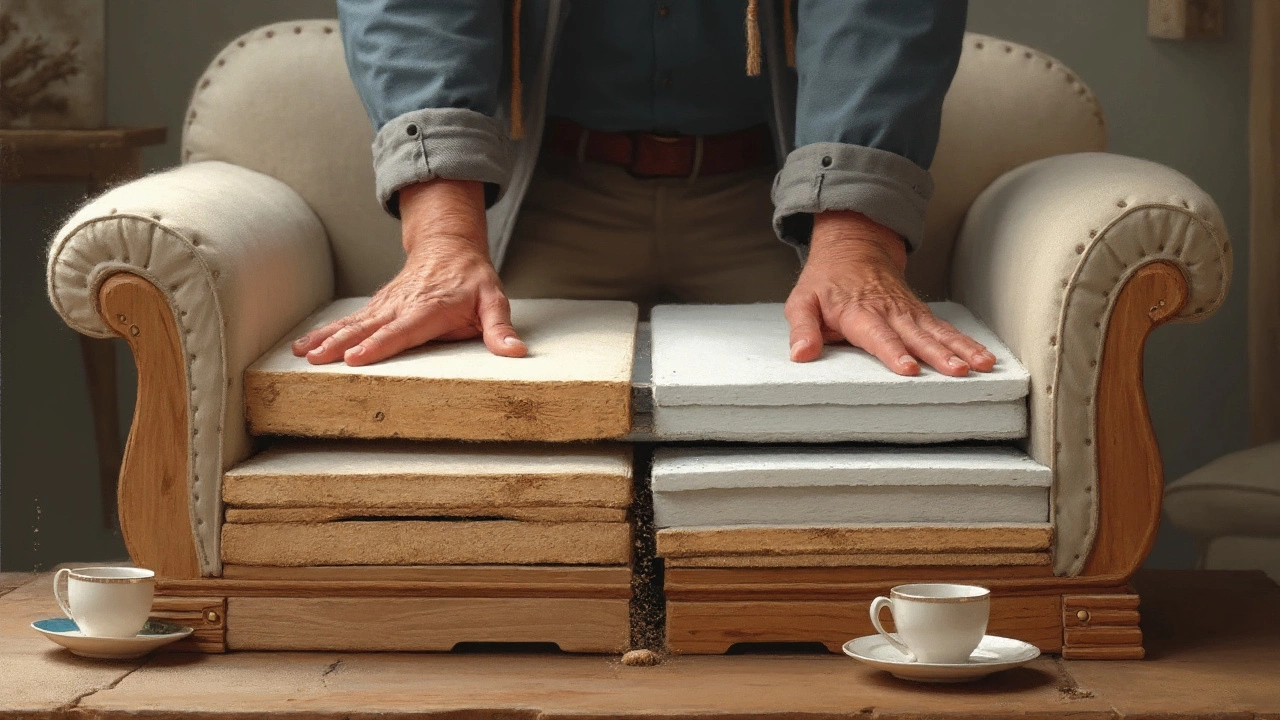
What Actually Kills a Couch?
Most couches die because of weak spots, not because you picked a bad fabric color or style. Frames bending or splitting, collapsed springs, and deteriorating foam are the biggest killers. Cheaper woods absorb bumps and bends—like when you drop onto the seat or kids use it as a trampoline. Softwood also attracts bugs in some climates, which is both gross and a fast track to furniture death.
Direct sunlight is a sneaky enemy, especially in sunny places like Melbourne. Even the best leathers and fabrics will fade and crack with enough UV exposure. Folks often push their couches right up against big windows, and that guaranteed spot for afternoon naps eventually leads to worn, brittle material.
Pets are a whole category of destruction on their own. Cats find joy in treating fabric arms as scratching posts, while dogs favor those comfy spots as beds. Cheaper fabrics and foams wear out in record time under paws and claws. If you share your couch with animals, look for high-performance, stain-resistant fabrics and make friends with slipcovers.
Certain cleaning habits also do more harm than good. Wet-cleaning some foams or soaking leather with water can cause mildew or shrinking. Always check the manufacturer’s care instructions—there’s a reason trusted brands attach a thick booklet about it under the seat.
Don’t ignore movement damage, either. Moving house is when you’ll see corners smashed, legs bent, and frames twisting if they’re not tough enough. Cheap frames don’t survive more than 1-2 moves. On the other hand, a well-built hardwood frame with solid joinery usually handles even a bumpy removal truck pretty well.
Life changes too—if a couch doesn’t match your new space or style, it’s more likely you’ll toss it. That’s more about taste than build, but durable classic designs tend to hang around in Aussie homes much longer.
Top Tips for Getting the Longest Life from Your Couch
If you want your investment to keep pulling its weight, a few easy habits seriously boost lifespan, no matter how much you paid:
- Rotate cushions and flip them if possible every few months. This spreads the wear and slows “favorite spot” sagging.
- Vacuum upholstery regularly to stop dirt and grit grinding into the fibers. Use the soft brush attachment to avoid snags.
- Deal with spills right away. For fabric, gently blot (don’t rub!) and check if you can use a mild soap or need a special cleaner. Leather? Blot off liquids, then condition every six months.
- Keep your couch out of direct sunlight as much as possible. Even a sheer curtain over the window will slow down fading and cracking.
- If you’ve got pets, try machine-washable slipcovers or throws. These add a shield while letting your furry mates join you for TV nights.
- Check legs and frames for loosening every now and then. Tighten screws or bolts as soon as you notice any wobble—you’ll prevent long-term frame issues.
- Move with care. Never drag a couch; always carry it (ideally with two people) and watch the corners.
- Stick to a neutral or classic style if you want the couch to look fresh as trends change. Mid-century looks and simple lines weather style swings better than wild, short-term trends.
- Consider protection sprays for fabric upholstery, but only if the manufacturer says it’s okay. Some chemicals ruin certain fibers.
- And finally, get to know what’s under the covers. Ask about frame wood, springs, and cushion fillings when you’re shopping. Ask for brand names on fabrics and foams, not just marketing fluff.
A final word for folks facing the choice between cheap and expensive: If you care about how long your couch lasts, focus hard on real construction, not just style or price. A well-made couch isn’t invincible—it needs some love. But put quality materials and build at the top of your list. If the choice is between one great sofa that lasts 15 years and three budget ones you have to replace every 4 years, you’ll save money and a lot of hassle in the long run.

